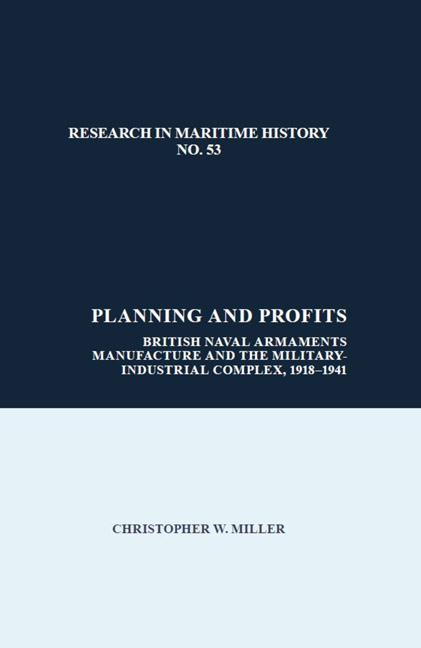 Planning and Profits
Planning and Profits While events after 1939 lie, in the main, outside the remit of this book, the general questions throughout have been to consider the role of industrialists and the private naval arms industry within supply planning, and to assess how they influenced, and were affected by, government policy. More generally, it has sought to examine decision-making processes and the effectiveness of the supply planning machinery in the CID and related bodies throughout their development in the 1920s and 1930s. Therefore, the early phase of the war and the culmination of years of planning and organising (and price-fixing) serve as the best place to conclude this work, rather than the outbreak of war itself.
Bearing this in mind: there are some overarching points to be made. The first concerns the role of an industrial elite within the state. This book has shown that in the case of naval arms there was both an elite group of “insiders” and a defensive ring of “outsiders” before 1936. There was no “web” of well-connected individuals conspiring with government to profit from the standard kind of “Military-Industrial Complex” that subsequent theories have sought to find. In the 1920s, the Admiralty and private industry certainly shared interests in the preservation of capacity, and as such jointly devised methods to protect facilities as best they could in the circumstances. This was, however, the result of a lack of power and influence, not evidence of it. At any rate, the schemes were small-scale and extended no further than a work-sharing rota or minor subsidies. Indeed, before Manchuria in 1931, the Admiralty struggled to articulate the need for more or newer vessels in the face of Treasury opposition, leading to the decline of the Royal Navy as an effective global fighting force and to the unquestionable decline of private manufacturing capability.
In the case of the “insiders,” their story was in some ways not unlike the 1920s Admiralty-industry relationship that brought about the WSBC. Again, it was not a vast shadowy network of industrialists influencing state decision making. The Supply Board turned to a handful of tried and trusted individuals, names which appeared and re-appeared in a variety of situations between 1920 and 1940.
To save this book to your Kindle, first ensure no-reply@cambridge.org is added to your Approved Personal Document E-mail List under your Personal Document Settings on the Manage Your Content and Devices page of your Amazon account. Then enter the ‘name’ part of your Kindle email address below. Find out more about saving to your Kindle.
Note you can select to save to either the @free.kindle.com or @kindle.com variations. ‘@free.kindle.com’ emails are free but can only be saved to your device when it is connected to wi-fi. ‘@kindle.com’ emails can be delivered even when you are not connected to wi-fi, but note that service fees apply.
Find out more about the Kindle Personal Document Service.
To save content items to your account, please confirm that you agree to abide by our usage policies. If this is the first time you use this feature, you will be asked to authorise Cambridge Core to connect with your account. Find out more about saving content to Dropbox.
To save content items to your account, please confirm that you agree to abide by our usage policies. If this is the first time you use this feature, you will be asked to authorise Cambridge Core to connect with your account. Find out more about saving content to Google Drive.